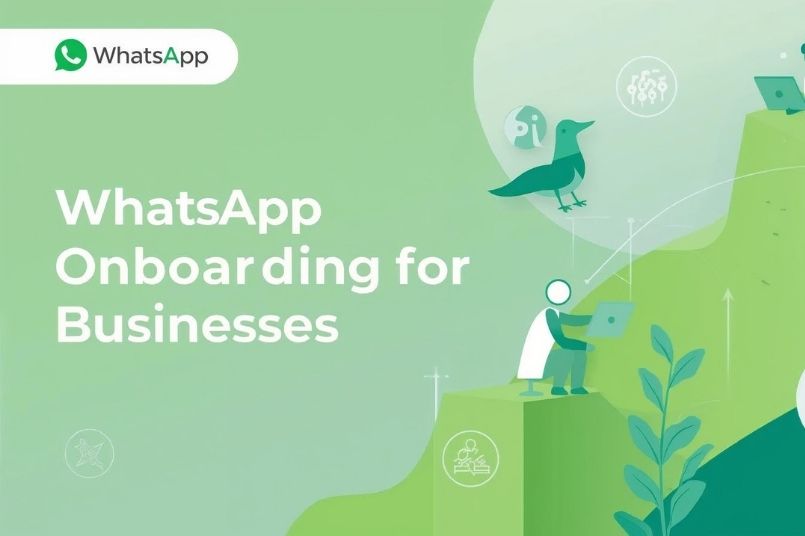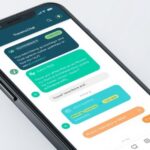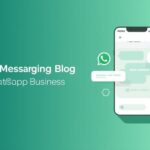EdTech Onboarding on WhatsApp: Templates, Flows, ROI

The growth of edtech in India transformed student enrollment processes but student onboarding experiences fail when they encounter delayed responses and extended forms and multiple link locations. The solution to this problem exists through WhatsApp which enables users to experience simple instant personalized admissions and first-week success processes. Edtech teams can enhance enrollment speed and reduce support needs while boosting student completion rates through consented messaging and approved templates and automation systems. The following guide demonstrates how Indian edtech companies should design WhatsApp onboarding journeys through specific message examples and flow designs and return on investment measurement points.
Designing the onboarding journey
The onboarding process for high performance begins when learners choose to participate. The initial communication should welcome learners by showing their interest and verify their enrollment path and present a direct path to begin such as a “Start enrollment” button or mini qualification form or demo class reservation. The initial process should remain brief while advancing step by step to obtain learner information starting with name and language choice followed by their goal selection between NEET and UPSC and CAT and coding bootcamp and spoken English and their preferred start date. The system should direct prospects to either human counselors or automated processes based on the collected information. The system should display payment details along with EMI choices when access requires payment but it should also show trial duration and essential setup tasks with automated reminders.
Templates that convert
The design of message templates requires them to be direct and useful and to guide users toward specific actions. The welcome template enables users to confirm their interest while providing immediate access to start their journey through “Choose your track” and “Book demo” buttons. The enrollment template presents all plan details and inclusions and validity period through a single “Complete payment” button. The first day of trial usage brings a message which shows the upcoming schedule and resource access points while the middle trial period sends brief value-based reminders about the “Today’s practice quiz is live” and the last message shows an upgrade option or counselor scheduling. The process remains within WhatsApp through a short checklist and secure upload link which protects sensitive information while users upload their ID and prior transcripts for advanced batches.
Flows for speed and clarity
The process should be broken down into multiple small steps. The discovery flow checks both course suitability and language proficiency while the enrollment flow manages plan choices and payment processing and the activation flow guarantees students complete their first learning task within 24 to 48 hours. The interactive features of WhatsApp including quick replies and lists and structured forms help users avoid typing mistakes and errors. The combination of a calendar picker with reminder functionality boosts student attendance in live classes and the “Join class” buttons simplify the process of joining sessions at their scheduled times. The system should send specific prompts to learners who stop progressing based on their previous activities such as selecting batch times or level tests or seeking mentor assistance. The system should direct users to human support when they show signs of confusion or when their cart value reaches high levels because human assistance during payment and course selection processes leads to better conversion rates.
Localizing for India
The onboarding process becomes more effective when it follows the payment systems and language patterns of India. The system should include English and Hindi as well as one additional local language for support and use examples that reference Indian educational boards and job positions. The system should support UPI payments together with cards and BNPL/EMI options by showing users what to do after successful or unsuccessful transactions. The content should be brief and designed for mobile devices while using Indian Standard Time scheduling and scheduling reminders for evening hours after school or work. The system should reduce frequency limits during peak exam periods and festivals while using gentle language to keep users informed about their deadlines.
Reducing drop-offs in week one
The first seven days of learning become a challenge for many students because they lack direction about their next steps. A “first-week playbook” should be sent through WhatsApp to help learners by providing an initial orientation on day one followed by a resource pack on day two and level assessment on day three and a live session or mentor check-in on day five. The purpose of each contact point should be to verify student advancement while establishing their upcoming small objectives. The sharing of class reminders along with brief summaries and short challenges between cohorts helps students maintain their progress. When students stop attending classes the system should send a supportive inquiry to determine if scheduling conflicts or technology problems or learning challenges prevented them from participating; students should then receive help from a counselor to modify their batch or access additional learning materials.
Support and self‑service
The perfect onboarding process combines fast delivery with protective measures. Create a minimal support menu which includes “Billing” and “Classes” and “Tech help” and “Counselor” sections and use pre-written answers that lead users directly to the LMS or billing portal or help center. The system enables users to contact support agents through a single button which transfers essential information about learner ID and course details and payment status to achieve quick resolution. The system should provide easy ways for users to opt out and prevent excessive communication because users develop trust when they receive helpful messages that respect their privacy.
Measuring ROI
The system should monitor student progress through every stage from subscription to payment and active learning engagement. The essential performance indicators consist of opt-in rates based on source channels (site widget and ad and webinar) and student enrollment rates from initial responses and payment success rates and enrollment speed and student retention during their first week and trial-to-paid conversion rates. The business case evaluation requires analysis of WhatsApp onboarding effects on student conversion rates and enrollment speed and support ticket frequency. The system should track revenue generation through specific templates and flows instead of campaigns to enable optimization of critical process steps.
Scaling what works
The core journey execution should be followed by segmentation and personalization implementation. The system provides faster learning paths to with working professionals to schedule weekend classes and minimize weekday notifications. The system maintains fresh content through quarterly template advanced students but delivers additional support to new learners. The system sends payment confirmations to parents but works reviews and A/B testing of copy elements and timing and incentive strategies to achieve ongoing improvement. The system should create a reliable onboarding process which delivers positive experiences to learners during their first day of use.
Frequently Asked Questions
How do we get opt‑ins for WhatsApp?
The website and registration forms and landing pages should include WhatsApp opt-in functionality which explains the benefits of subscription (reminders, class links, support) and allows users to opt-out at any time.
What templates should we start with?
The first set of messages should include welcome messages followed by enrollment summaries and payment confirmations and trial kickoff notifications and class reminders and first-week milestone alerts. Each message should contain a single main action that users can follow.
How soon should the first message be sent?
The first message should be sent right after users opt-in to the service. A second nudge should be sent between 2 to 4 hours later when users remain inactive before delivering a next-day reminder that references their previous activity.
What reduces trial drop‑offs the most?
The first week of the program includes an orientation on day 1 followed by resource distribution on day 2 and level testing on day 3 and a live session on day 5 with brief WhatsApp messages for support.
How do we measure success?
Track opt‑ins, enrollment conversion, payment rate, first‑class attendance, trial‑to‑paid lift, first‑week retention, and ticket volume per student to determine ROI.






Review EdTech Onboarding on WhatsApp: Templates, Flows, ROI.